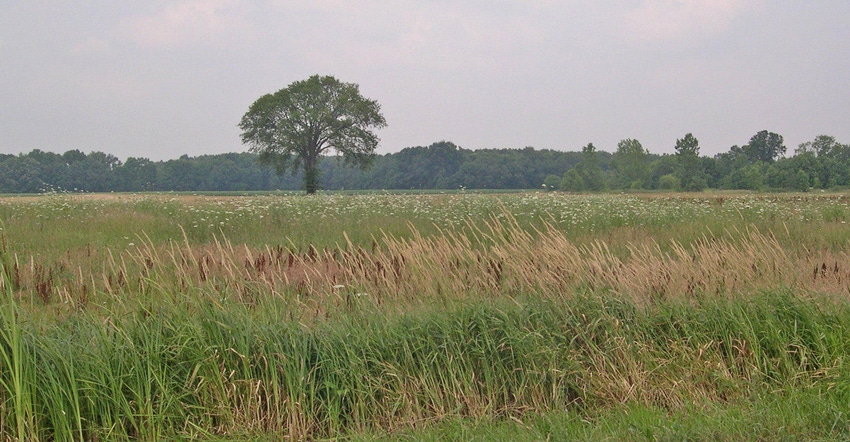April 9, 2019

That majestic tree standing all by itself — of course you notice it. Smack-dab in the middle of a field of hay, corn or beans, it seems to stand proud and tall, showcasing 50 to 100 years of growth and longevity.
When I see a large tree standing amid the crop, I wonder: Why is that one lone tree in the field? Why was that particular tree chosen?
The reason for saving a singular tree is most likely pretty simple: The tree provided shade. In the days of cabless tractors, that single tree offered a shady spot to have lunch, supper or breakfast — depending on how many meals were eaten that day in the field — as well as how desperate one is to feel relief in the shade, relishing a little cool-off from the hot sun beating down.
That single tree also provided shade for livestock animals before the tractor. The team of horses, mules or oxen could take a break from their workday alongside the farmer.
When asking around to others about the reason they think a single tree was left to grow in a field, I got the most bizarre answers: “It is a windbreak,” said one know-it-all. To which I asked, “How does one tree constitute a windbreak?” This shot down that nonsensical idea.
Another jumped in with an equally ridiculous response: “That tree is a lightning rod, so that the crop does not catch on fire.” My response: “Really? I have never heard of a crop catching fire.” Again, that comment extinguished the crop fire notion.
Another person suggested, “It was used as a boundary marker.” To this suggestion I replied, “OK, I get that; but that singular tree can impact yields by the canopy of leaves robbing sunlight to get to the crop, as well as the tree roots robbing water to hydrate the crop, and nutrients to feed the crop.” Not a lot of response to that idea.
So, if it can simply be agreed upon that the tree was there to provide shade relief from the sun, the next question is this.
Why was that particular tree chosen?
Now that is anyone’s guess.
Could it be that one tree was near a rock, and the farmer wanted to have a marker to avoid striking the rock with equipment?
Could it be that that one tree was too stubborn to be removed, so the farmer said, “Oh, heck, let’s have a shade tree”?
The romantic in me would like to think that one particular tree was chosen because it had sentimental value: such as that one tree was the place where grandpa asked grandma to marry him, and they carved their initials into the tree. That is my kind of reasoning — emotional.
Why mention that 1 single tree?
Well, it just so happens that my family is selling a piece of farmland to a company paying top dollar per acre, where that company will put solar panels to add electric power to the grid. Ironically, the tree has to be taken down so that it will not allow a space for bats to nest. Maybe that was the reason the tree was originally saved ... to provide a nesting place for bats that eat insects.
So, the single tree that provided shade now must be removed for solar panels to be installed to power energy needs, including your air conditioner. So much for using a shade tree to provide relief from the sun.
Tomko is a professor and farmer who writes from Rittman, Ohio.
About the Author(s)
You May Also Like




